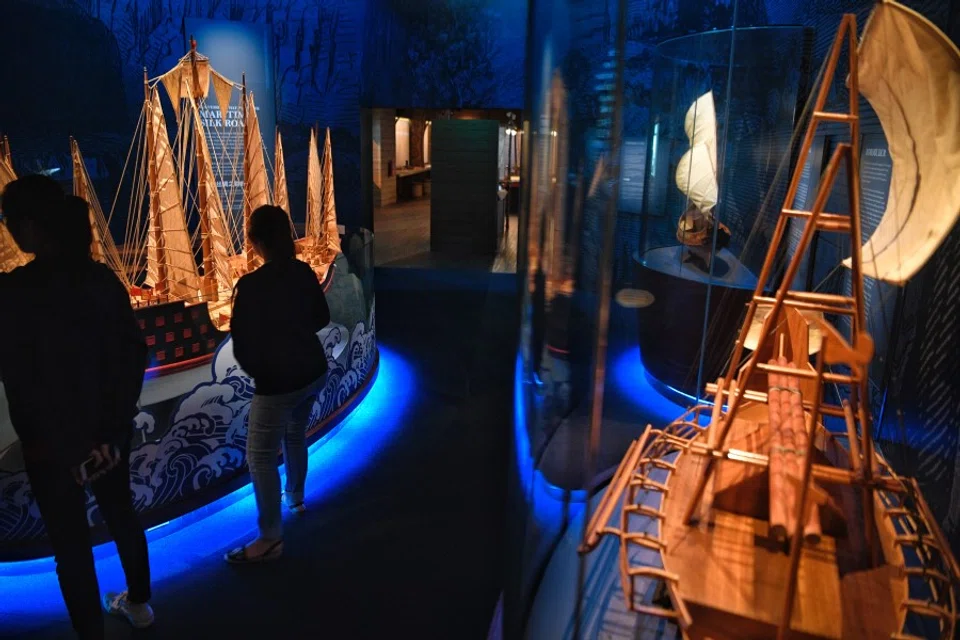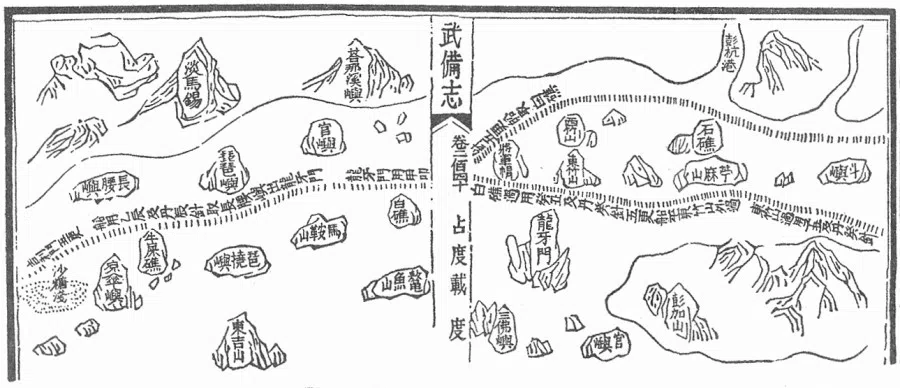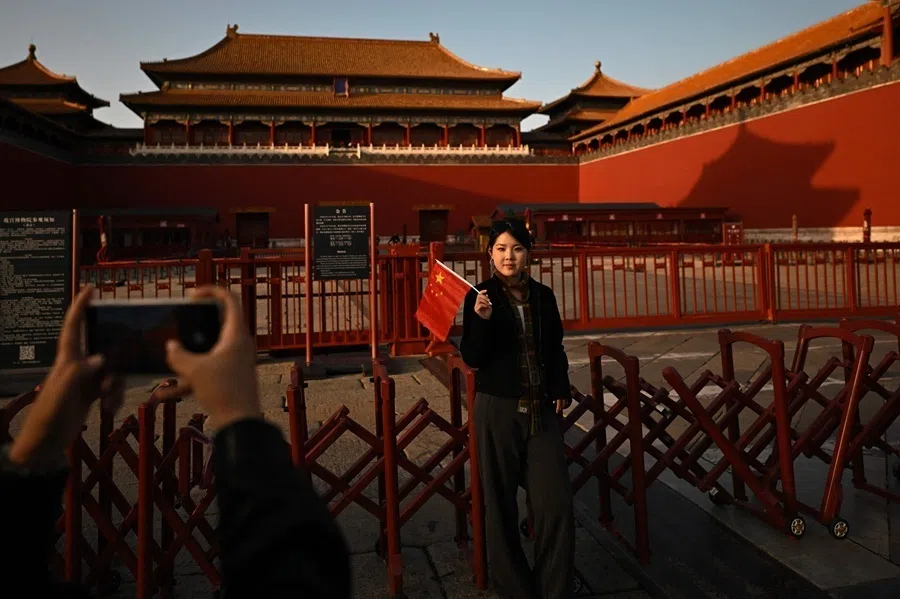Southeast Asia in the forgotten history of the Maritime Silk Road?
Southeast Asian countries need to do more to ensure that their historical contributions in developing China-Europe trade through the Maritime Silk Road are not lost amid contemporary narratives giving prominence to China's centrality. This is not just a matter of historical accuracy but of sovereignty and identity, say RSIS academics Kwa Chong Guan and Han Fook Kwang.

President Xi Jinping of the People's Republic of China proposed the creation of a new 21st century Maritime Silk Road connecting China to Europe, and increased connectivity and maritime cooperation between China and ASEAN, in his address to the Indonesian parliament in October 2013. This invocation of a Silk Road as an antecedent to China's Belt and Road Initiative (BRI) is an innovative approach to accentuate the link between China and Europe through Southeast Asia.
The Chinese narrative emphasises the centrality of China in developing South China Sea and Indian Ocean trade, and the importance of Chinese ports, actors and goods in creating the Maritime Silk Road. There is one problem with this account.
It ignores the historical fact of Southeast Asia's pivotal role in the trade between China and the West. Southeast Asian countries need to do more to reclaim their past and ensure a more accurate accounting of their historical contributions.
Southeast Asia was not a passive thoroughfare along the Maritime Silk Road linking China with West Asia and the Mediterranean.
Not a passive bystander
The fact is that trade in the region did not start with ancient Rome and Han dynasty China.
Southeast Asia was not a passive thoroughfare along the Maritime Silk Road linking China with West Asia and the Mediterranean. Rather, Southeast Asian port settlements were major nodes on that Silk Road where spices and other exotic products of the region were traded.

Archaeological excavations in the twentieth century have confirmed that local communities and chiefdoms in the Mekong delta, the Kra Isthmus and various islands of Southeast Asia formed trading circuits which linked the South China Sea with the Indian Ocean, Persian Gulf and the Red Sea from the beginning of the Current Era. It was along these regional trading networks that spices from Southeast Asia, especially pepper and cinnamon, travelled west to Rome and north to China.
Imperial Chinese envoys sent to the South Seas to find out where the spices and plants for their pharmacology and aromata such as camphor, frankincense and other incenses came from, reported that these products were traded at several trading settlements in the Mekong, which they grouped as a kingdom called Funan. There was another group of trading settlements along the east and west coast of the Kra Isthmus, north Sumatra and Kedah (which is on the Malay peninsula).
The Chinese envoys and other Chinese reports described the traders of the spices and aromata as dark-skinned "Kunlun" (昆仑) people with the ability to sail ocean-going ships, which we see today carved on the reliefs of the Barabudur (or Borobudur), built in the ninth century CE, in central Java and considered the largest surviving Buddhist temple in the world today. Besides the Kunlun mariners and traders, there were also Indian, Persian and Arab traders and shippers sailing the South China Sea and the Indian Ocean.
The large cargo of Tang Dynasty ceramics which was shipwrecked near the Indonesian island of Belitung and is now exhibited in the Asian Civilisations Museum in Singapore, was carried in an Arab dhow.
Chinese traders ventured into the South China Sea only in the eleventh century CE, during the time of the Song Dynasty, when China with a thriving economy, turned to maritime trade to meet its growing demand for foreign exotica...

Indian traders ventured into Southeast Asia and the South China Sea in search of not only spices, but gold, which they considered Southeast Asia to be: the lands of gold or Suvarnadvipa. Buddhist and Brahmin priests also sailed the trade routes to these lands of gold where their theologies inspired the great monuments at Angkor, Java and Myanmar.
Chinese traders ventured into the South China Sea only in the eleventh century CE, during the time of the Song Dynasty, when China with a thriving economy, turned to maritime trade to meet its growing demand for foreign exotica. Until then, Chinese traders waited for their foreign counterparts to bring their goods to the Chinese ports of Guangzhou and Quanzhou.
The Strait of Malacca was not only a thoroughfare on the Maritime Silk Road which shippers and traders had to sail. The trading settlements which emerged along the Strait were major nodes on this Maritime Silk Road where the spices from Eastern Indonesia or the interiors of Sumatra and the Malay peninsula were brought to be traded.
Enter Srivijaya and Temasek
Srivijaya emerged as a leading emporium dominating the trade passing through the Straits of Malacca from the seventh to the twelfth centuries. It was founded by a group of Malay chieftains some fifty kilometres up the Musi River. Its location at the Musi River's confluence with the Ogan and Komering rivers enabled Srivijaya to control the riverine trade stretching up to the Sumatran highlands.
The Maritime Silk Road did not come to an end in the seventeenth century CE with European colonisation in Asia, as conventionally believed.

Arab travelogues and imperial Chinese archives attest to the significance of Srivijaya as the leading emporium at the southern end of the Strait of Malacca. At Srivijaya, traders could source for not only spices brought in by local traders, but also other products for the Chinese market. These ranged from sea cucumbers and tortoise shells to incense such as local frankincense which was marketed as the original Persian product.
Srivijaya's dominance of the trade passing through the Strait of Malacca was sufficient to threaten the south Indian Chola kingdom for its king to mount a major naval expedition in 1025 against Srivijaya and its subsidiary ports along the Strait of Malacca. Srivijaya never quite recovered from the Chola raid and its grip on the trade of the Strait of Malacca was lost to a number of new port settlements.
Temasek was one of the port settlements emerging in the fourteenth century CE vying for a share of the trade along the Maritime Silk Road. But it was overshadowed by the emergence of a new port settlement to its north: Melaka (Malacca), which succeeded Srivijaya as the major Malacca Strait emporium.

Tome Pires, the administrator of the spice trade in Malacca after it was captured by the Portuguese in 1511, reported that "whoever controls Malacca has his hands on the throat of Venice", then the major European terminal of the Maritime Silk Road.
The Maritime Silk Road did not come to an end in the seventeenth century CE with European colonisation in Asia, as conventionally believed. East-West trade entered a new era with growing European demand for not only Southeast Asian spices, but also tea, porcelain and other Chinese products.
In 1648, China's Kangxi Emperor lifted the centuries old and increasingly ineffective system of tribute trade and opened the Chinese market to private trade.
These sea routes set out Southeast Asia as a cultural melting pot into which the civilisational influences of the South Asia sub-continent, West Asia and East Asia poured to make what defines Southeast Asia as a distinctive region today.
It is about identity
It is important that this account of how Southeast Asian countries were prominent traders, actively developing extensive commercial links with the outside world and with each other, is not lost among many other competing narratives. They were not subsidiary players wholly subservient to foreign powers. The issue is not just about historical accuracy.

It was not only spices, silk and religious theologies which moved on the sea routes connecting South China Sea and the Indian Ocean. Probably more critical was the practical knowledge of sailing on the monsoon winds and building the ocean-going ships depicted in the Borobudur Buddhist temple in central Java pioneered by the coastal communities of Southeast Asia which determined the sea routes connecting the South China Sea to the Indian Ocean. These sea routes set out Southeast Asia as a cultural melting pot into which the civilisational influences of the South Asia sub-continent, West Asia and East Asia poured to make what defines Southeast Asia as a distinctive region today.
Nation states need a strong sense of who they are and where they came from to shape and strengthen their national identities. This is even more important for countries in the region as major powers from outside Southeast Asia exert their influence in a shifting geopolitical landscape.
This article was first published as a RSIS Commentary on 13 October 2023.





![[Big read] Prayers and packed bags: How China’s youth are navigating a jobless future](https://cassette.sphdigital.com.sg/image/thinkchina/16c6d4d5346edf02a0455054f2f7c9bf5e238af6a1cc83d5c052e875fe301fc7)
